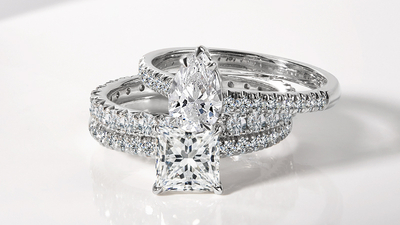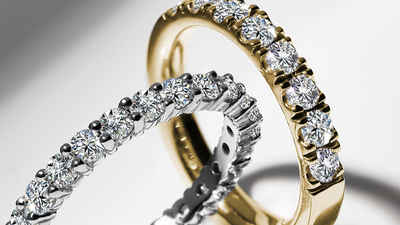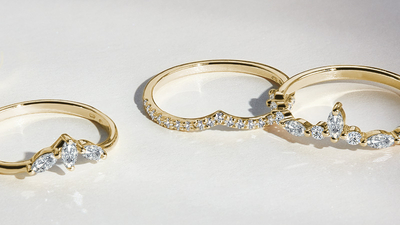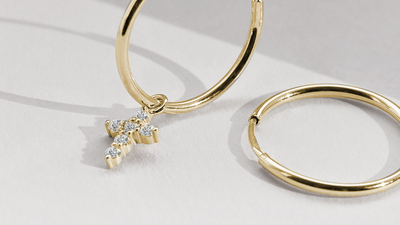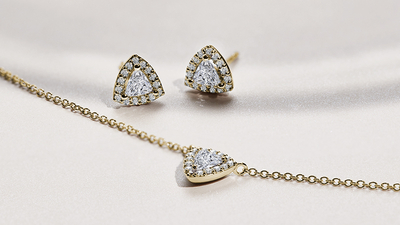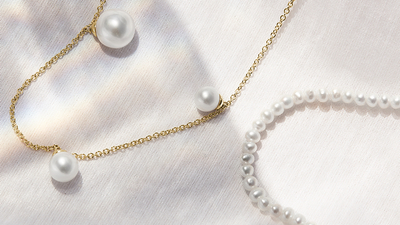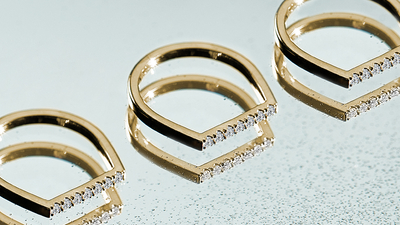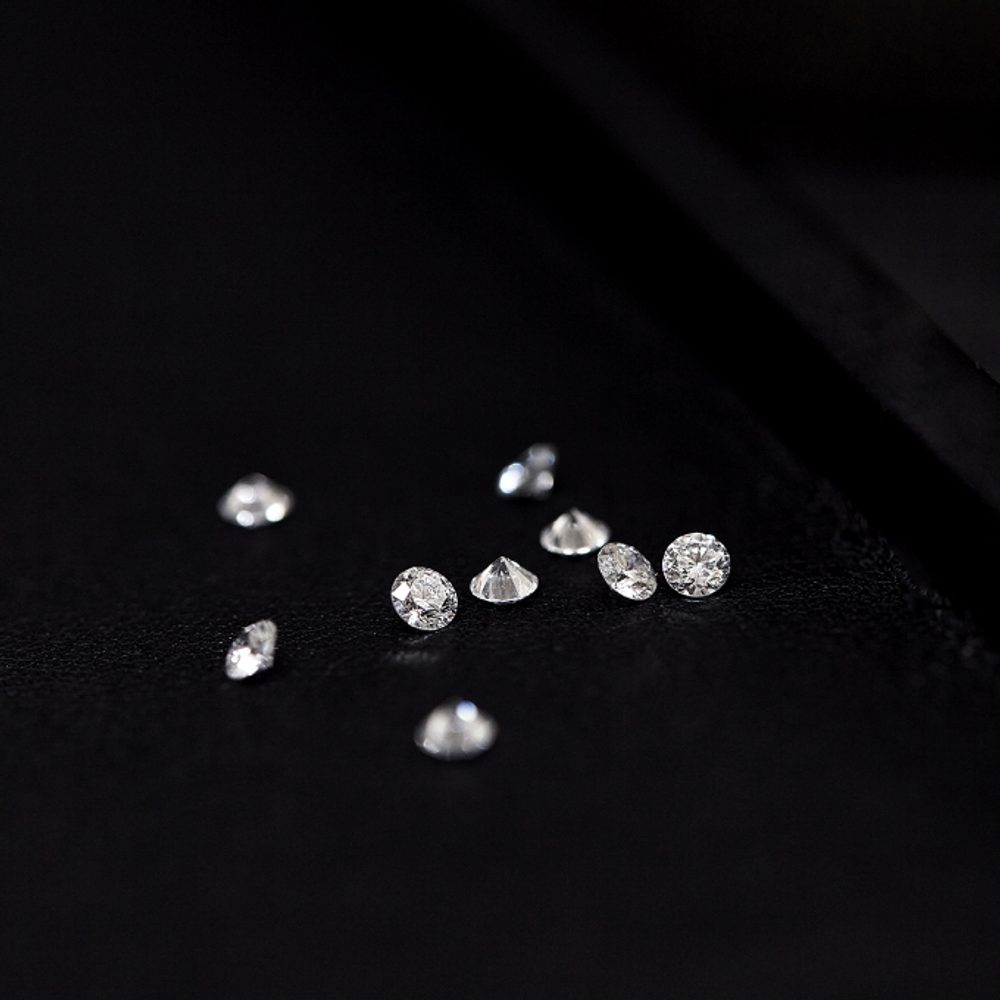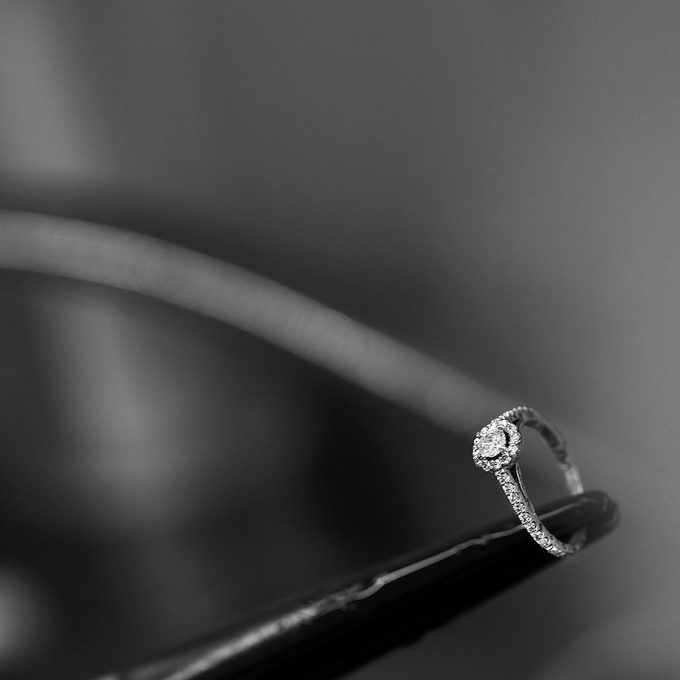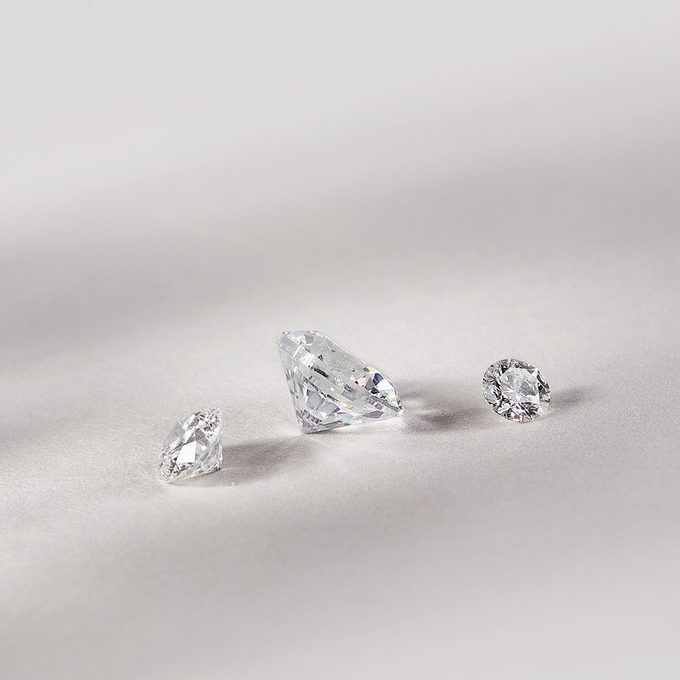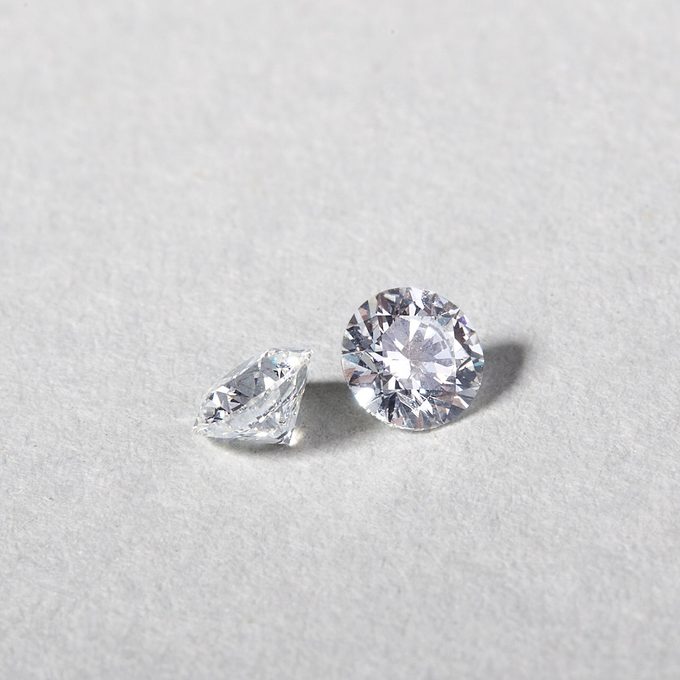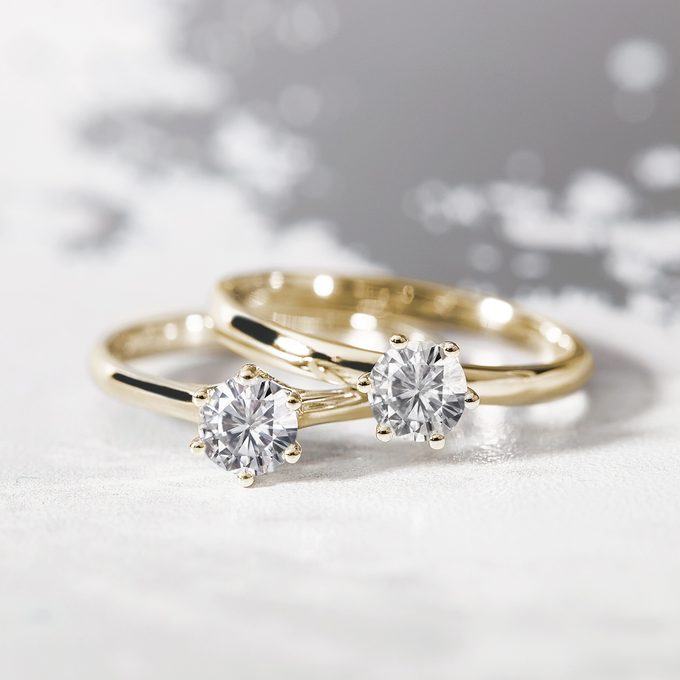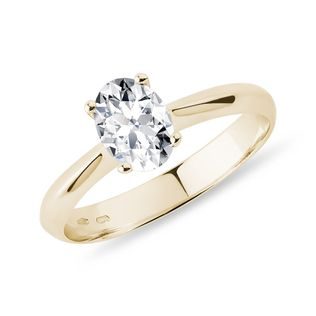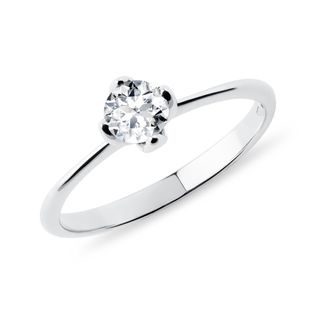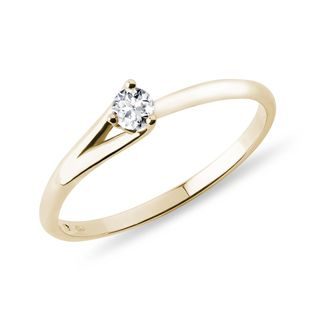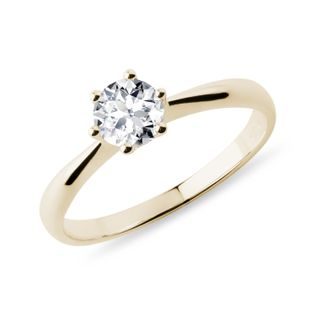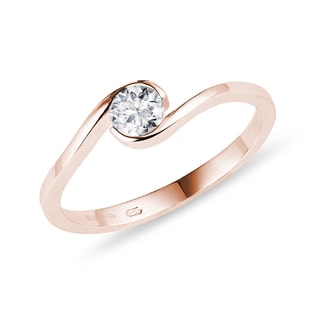One of the parameters that significantly affects the value of diamonds is carat weight. A carat, abbreviated as ct, is a special unit of weight used to determine the size of diamonds and other gemstones. One carat represents one fifth of a gram - 200 milligrams or 0.00643 troy oz and it is usually rounded to the hundredths.
Weighing precious stones
The origin of the word carat dates back to the Middle Ages. Long ago in history, the seeds of the carob tree, (also known as St. John’s bread) which has the Latin name Ceratonia siliqua were used to determine the weight of precious stones. The official unit of the metric carat with a precise weight of 0.2 g was not introduced until 1907 and this is how the weight of gemstones is still stated even today. However seeds are no longer used for weighing but instead there are special scales with an accuracy to the one thousandth.
The term carat (or carat in the UK) can also be found in jewelry alloys, especially gold, where it refers to their purity. In this case, the abbreviation kt or just k is used in the US while in the UK, the term carat is also still mainly used when referring to the purity of gold and the abbreviation of ct is typically used. You will come across 14k or 24k gold. The greater the number of carats an alloy has, the greater the proportion of the precious metal it contains.
Weight versus size
In practice, people often confuse carat weight with the size of the stone. Many presume that a higher number of carats automatically means a larger stone. But it's not that simple. In fact, the number of carats does not determine the size, but rather the weight of the stone. So it is not unusual for two diamonds of the same carat weight to look different in terms of size. This is because we evaluate the size of a stone by looking at it from above. The most noticeable difference is between the individual shapes and cuts of diamonds. If the stone is cut more into depth, then a smaller part of the diamond is visible on the surface. Cuts with more depth include the brilliant cut, but with this cut the high sparkle makes up for its smaller diameter. Conversely, elongated shapes such as the marquise or pear appear visually larger.
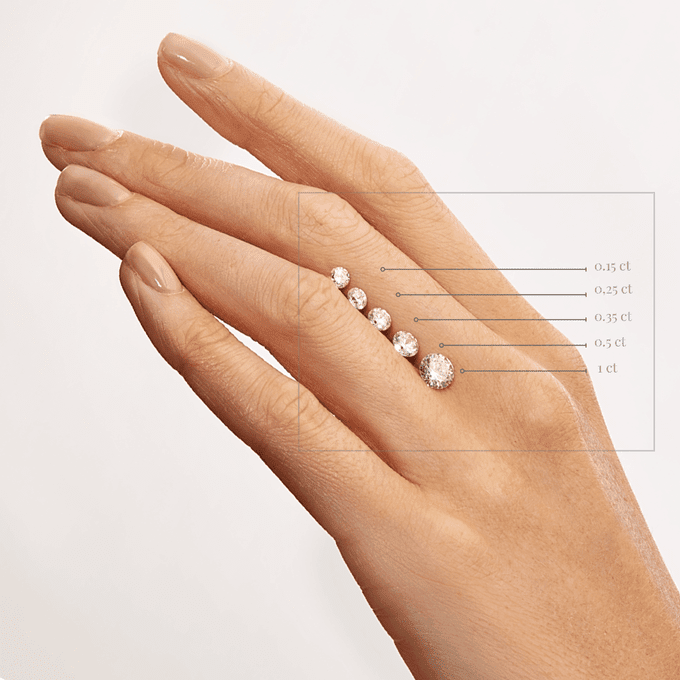
What determines the price of diamonds?
Diamonds are unique among gemstones in that there is a globally recognized grading system for them which gives a better indication of the current prices of cut diamonds. It is called the Rapaport Diamond Report, which is also shortened to "Rap List". However it is not available to the general public. Since the time it was founded in 1978 by Martin Rapaport, it has exclusively served industry professionals who pay for regular access to it.
The report is in the form of a price list and consists of 18 tables in total. The price of each diamond is based on the 3Cs parameters, namely color, clarity and carat (the weight). Each table consists of two axes. The horizontal one represents clarity and the vertical one represents color. The point at which they intersect in the table states the price per carat in US dollars. This price list is updated every Friday and reflects only long term trends, not temporary fluctuations.
For anyone from the general public or for investors who are interested in diamonds, there is another document called the Diamond Retail Benchmark which anyone can use for free to check whether the asking price of a given diamond is reasonable and fair. However with diamonds which have been set into jewelry things are much more complicated. The final price of a piece of jewelry also reflects the value of the metal, the design, the difficulty of the craftsmanship, its originality, as well as other factors.

The bigger the diamond, the higher the price?
The weight of a diamond is not the only criteria that affects the value of it. There are what’s known as the 4Cs - Carat (weight), Color, Clarity and Cut. And so it could happen that a larger diamond that is worse in one or more of the other parameters will be cheaper than a diamond which weighs less. Both color and clarity have their own grading system. With color, yellow to brown tones reduce the price. Clear, colorless diamonds, i.e. the most valuable ones, are labeled with the letter D. When it comes to clarity, it is the degree of inclusions which is graded. The topic of diamond color was discussed in the article The color grading of natural clear diamonds while diamond cuts are discussed in the text Shiny and bright: diamonds in a brilliant cut.
How many carats should a diamond in an engagement ring have?
As already mentioned, carat weight significantly affects the price of a diamond. So we can say that with each carat, the price of a diamond increases exponentially rather than in direct proportion. The budget we have set aside for an engagement ring will, in a way, define the range of rings we can choose from.
Let's take a look at the individual differences using a specific engagement ring, K0191. It has a classic design, which is dominated by a round brilliant-cut diamond set into six prongs. Its timelessness is what makes it the best-selling engagement ring in our collection.
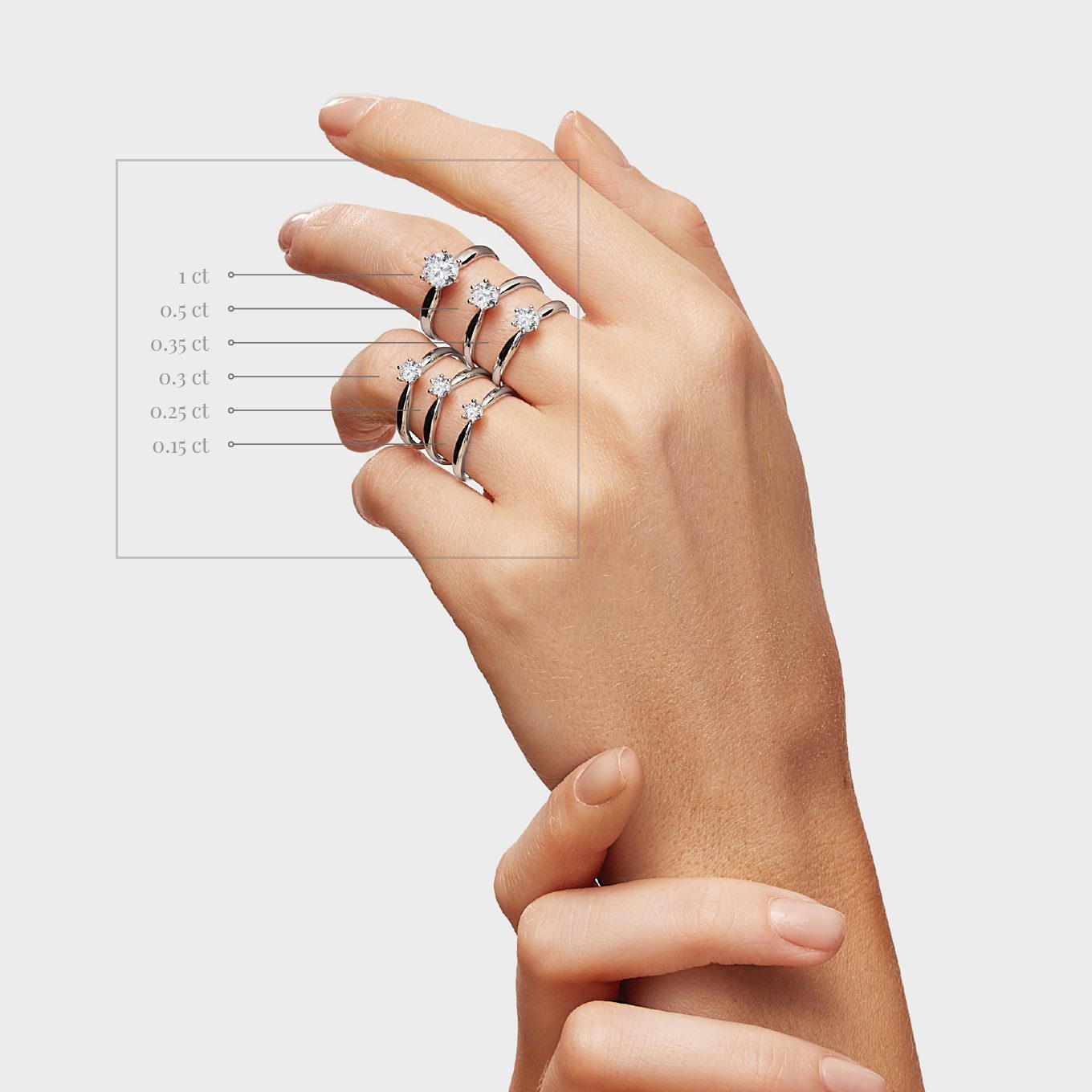
The prices of the different versions of this model vary according to the number of carats of the diamond set into it. In the photo below you can see a comparison of all the sizes of diamonds which we produce this model with. You can also view and compare the rings in person at our jewelry studio.
The price of the ring increases with the number of carats in SI/G quality roughly as follows:
- 0,15 ct diamond - up to $800
- 0,2-0,25 ct diamond - up to $1,500
- 0,3-0,35 ct diamond - up to $2,500
- 0.5 ct diamond - up to $4,700
- 0.8-1.0 ct diamond - from $8,100
However, it is certainly not true that the most beautiful engagement ring is the one with the largest diamond. It is always necessary to judge the appearance of a piece of jewelry in its entirety. Moreover, jewelers know tricks that visually increase the surface area of the diamond. Such an effect is undeniable especially with a bezel setting which creates a round border around the entire diamond. If you want a larger ring than your budget allows, you could also choose from models that combine multiple smaller diamonds. Examples include the popular design of three diamonds in a row or the halo style, where a larger stone is surrounded by smaller diamonds.
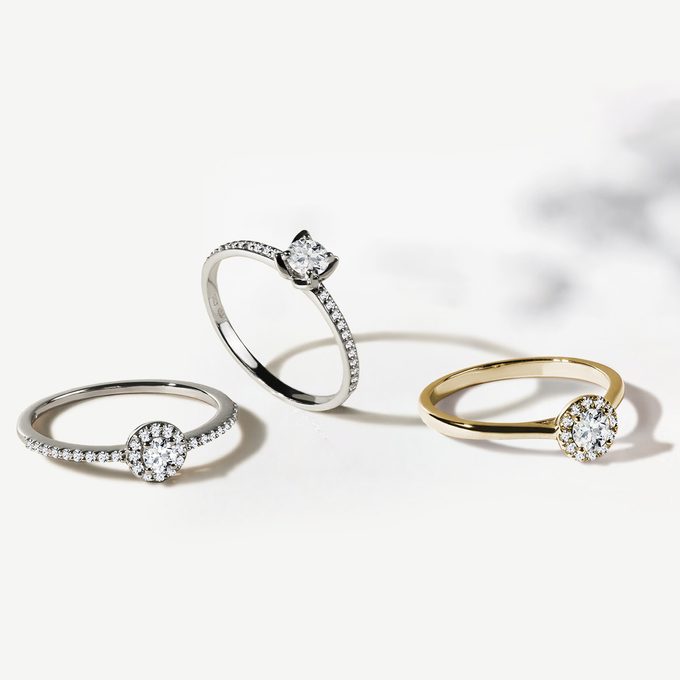
An investment for life
The value of diamonds has been steadily increasing by 5-10% per year, making them a very attractive asset for investment. It has been reported that up to 111 million carats of rough diamonds were mined worldwide in 2020. This may seem like a huge amount to you, but only a small fraction of these diamonds make it into the hands of gem cutters and then on to jewelers. In fact, most of the diamonds mined are of insufficient quality and go on to be used in other industries.
The world's largest diamond
As a final point, we would like to mention one more interesting fact. The world's largest diamond is The Cullinan, which was found in South Africa in 1905 and which has never been surpassed in terms of size since. It weighed an incredible 3106 carats, or 621.35 grams. Its former owner, Britain’s King Edward VII decided to have it split by jewelers in Amsterdam into several pieces. They cut a total of 9 diamonds from it. The two largest pieces were set into the British Crown Jewels. The largest, Cullinan I or the Great Star of Africa, weighing 530.4 carats, was cut into the shape of a pear and adorns a scepter with a cross, while the Cullinan II or Second Star of Africa, weighing 317.4 carats, was cut into a cushion shape and is set into the British Imperial State Crown. The other seven diamonds are privately owned by Queen Elizabeth II.
